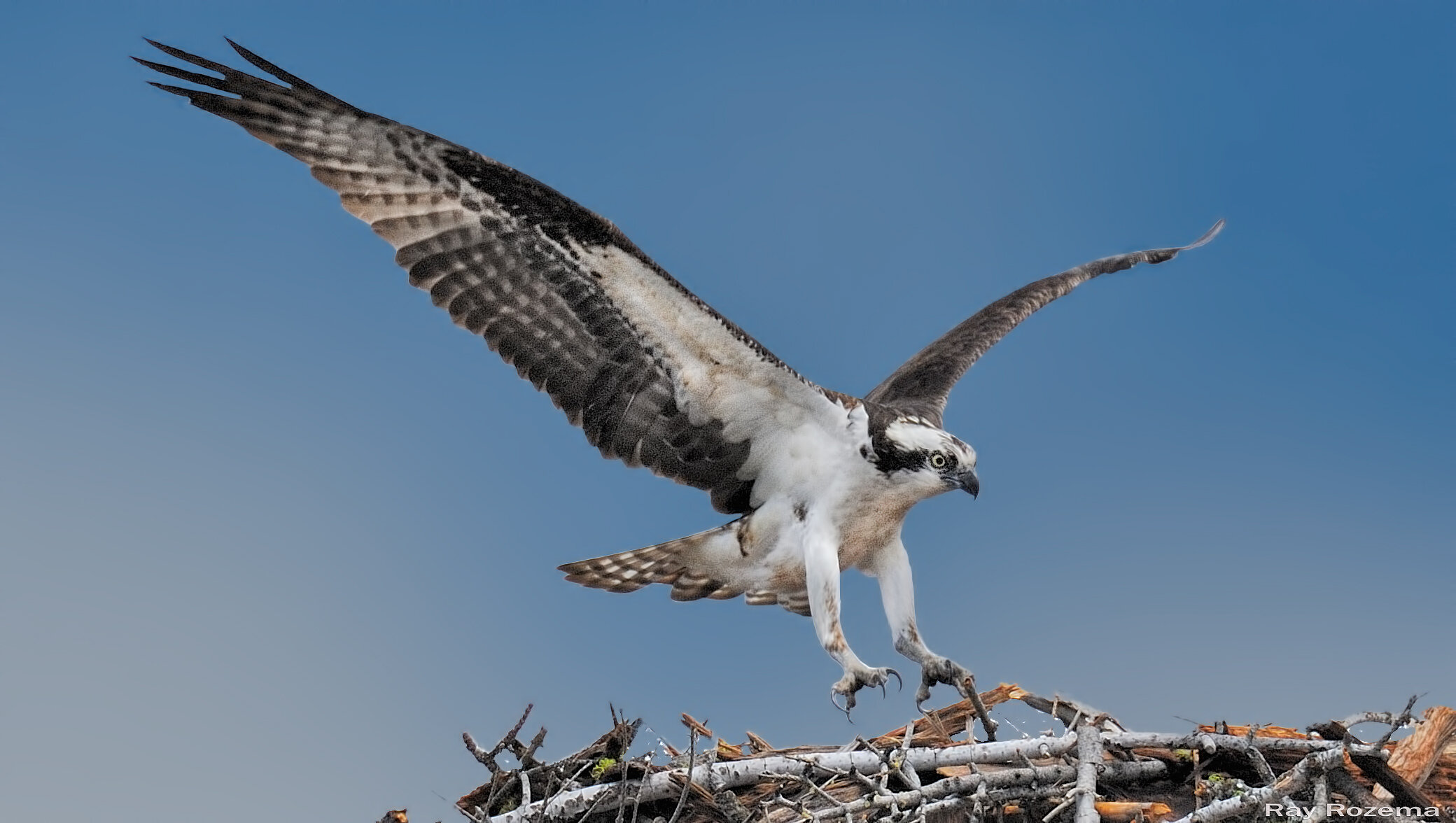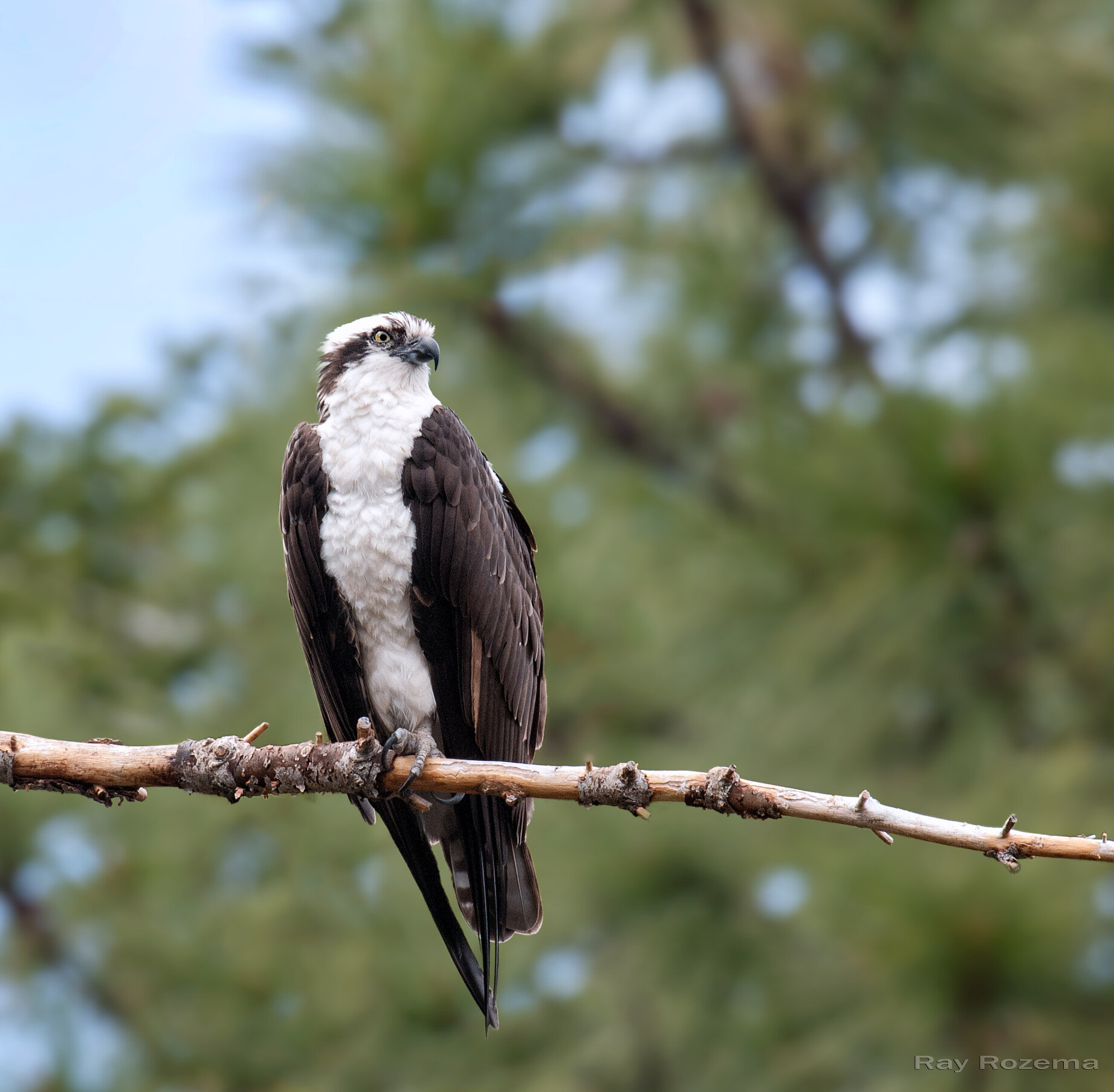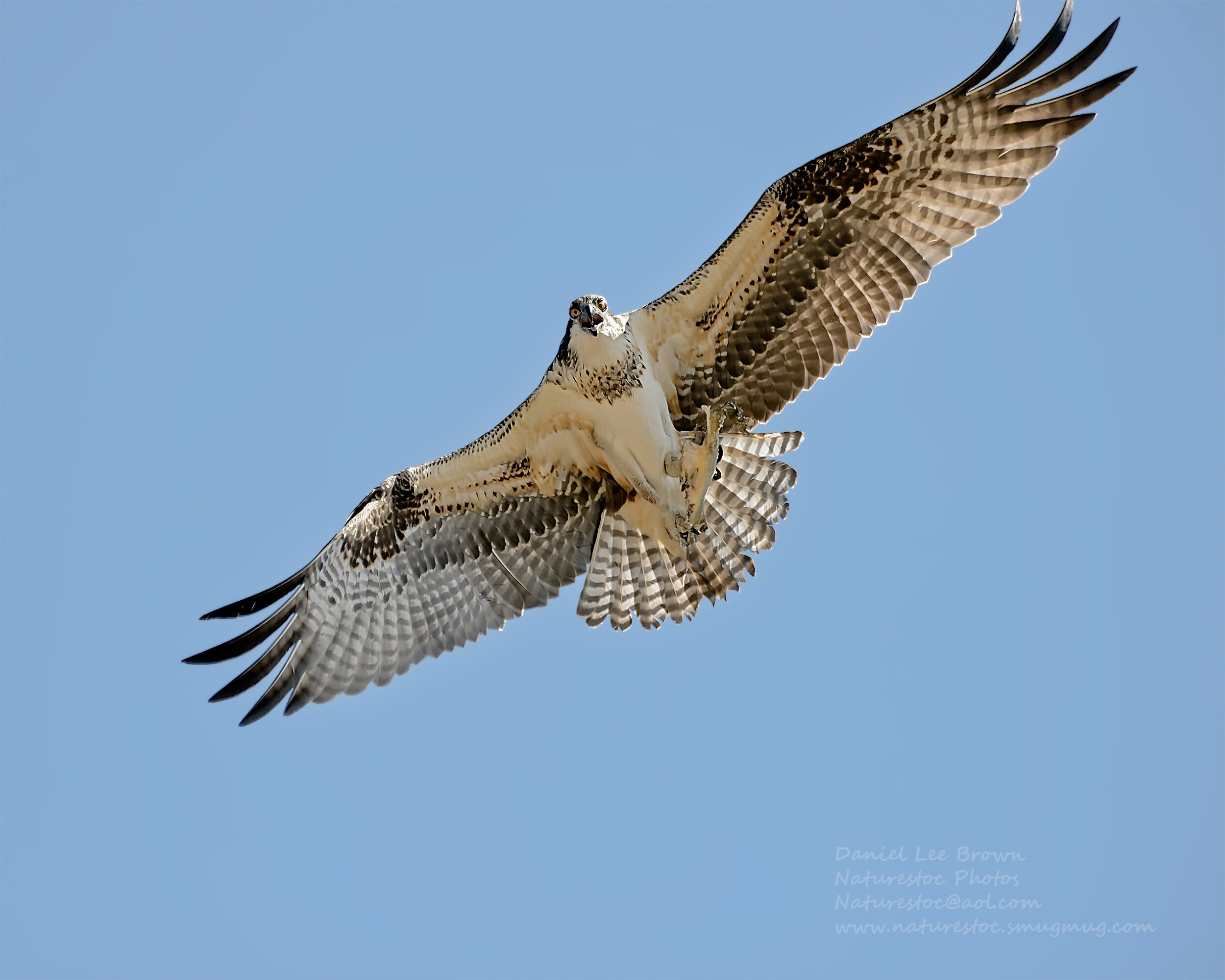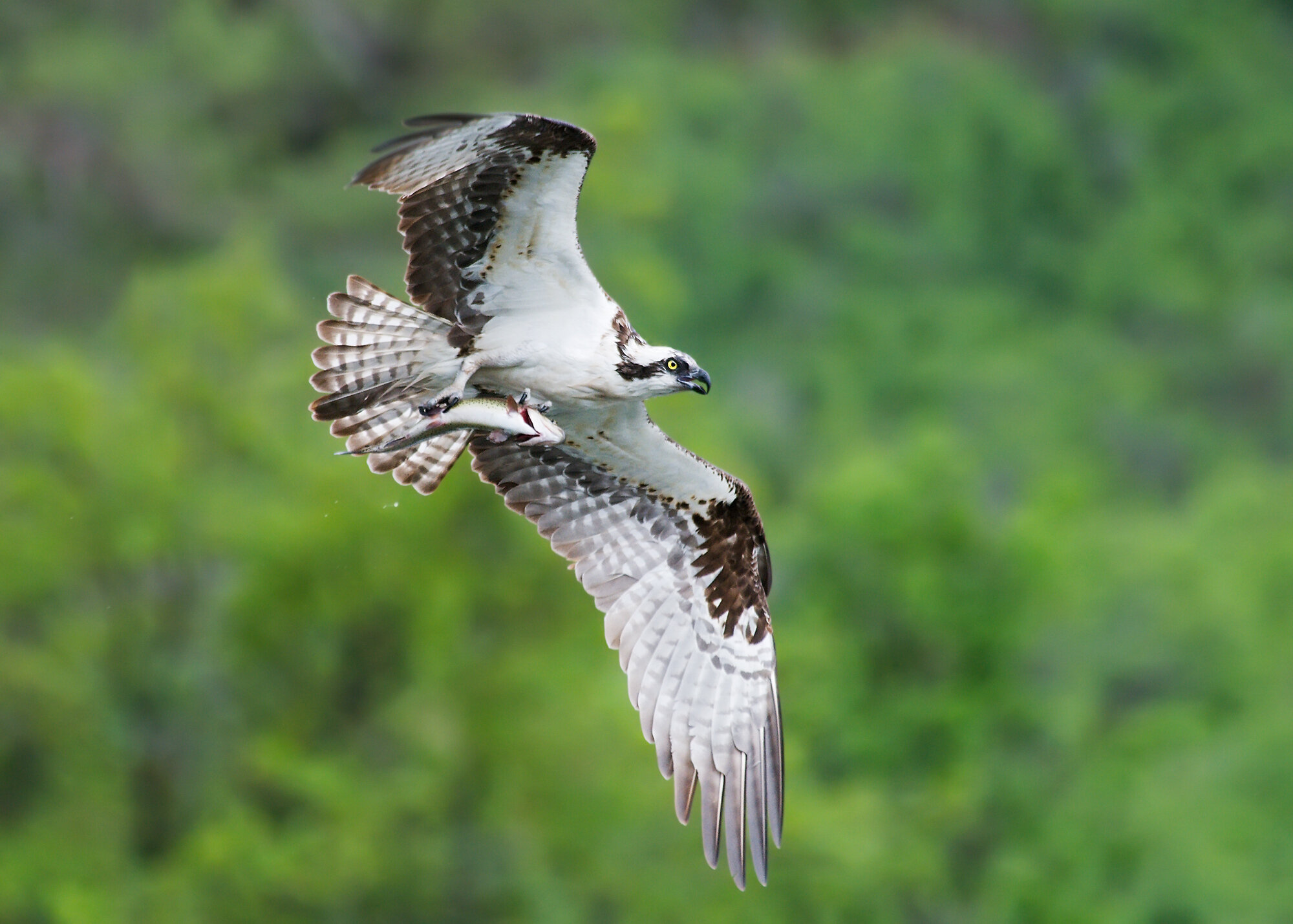Male Osprey, Image by Ray Rozema
This month, let’s talk about a magnificent bird called the Osprey. Ospreys are raptors (birds that eat other animals) and are found in many parts of the world. They are usually seen alone or in pairs; but they can also be in small groups. While some Ospreys stay in the Sacramento Valley for the winter, many migrate in the Fall to Central and South America. It was reported in 2008 that a female Osprey started her Fall migration from the state of Massachusetts. After some short visits to several countries along the way, she ended up along a remote river in the South American country of Suriname! Scientists learned about this bird’s travels after they attached a miniature satellite transmitter to her back. This Osprey flew over 3000 miles in 13 days to find a perfect spot to stay for the winter!
What do Ospreys look like?
Female Osprey, Image by Daniel Lee Brown
Ospreys are medium to large, slender raptors that have long, broad wings. They have brown backs, brown upperwings, and brown upper tail feathers. Male Ospreys’ chests are completely white; whereas female birds have a finely patterned, dark ‘necklace’ on their otherwise white chest. There are two colors on their underwings: there is a solid white area in front, and in back there are areas with brownish-black markings. Ospreys also have a dark patch on their front underwings. They have white heads except for a small dark area on the top. Ospreys have a brown stripe that runs across their eye area and continues across their cheeks. This dark mask on their face acts to reduce the glare that occurs when the sun shines on the water! On the underside of their tails, you can see the same barred pattern that is also present on part of the rear underwing. In flight, Ospreys hold their wings with a slight bend in the middle; so their wings are in the shape of the letter M. Young birds have a white fish scale-like pattern on their backs and have tannish colored chests.
Where do Ospreys live?
Osprey landing in a nest, Image by Ray Rozema
You can find Ospreys living near open bodies of water of either freshwater or saltwater. They are found soaring along seacoasts, lakes, rivers, ponds, and estuaries (areas near where the ocean tide meets with a river or stream). Ospreys lay 1 to 4 eggs and they nest once per year. The nests are quite large and look like a pile of disorderly sticks or twigs. Ospreys use bark, sod, grasses, vines, algae, and other materials to line their nests. Frequently, it’s the male that brings in nest-building material and the female designs the nest. You can often see Osprey nests in the top of bare trees (or tree snags), on boulders, flat ground, utility poles, or other man-made structures. Special-made platforms have been put up for Ospreys to nest on. These platforms have helped to increase the number of Ospreys in some areas where their population had decreased.
What do Ospreys eat?
Osprey carrying a fish, Image by Daniel Lee Brown
The diet of Ospreys is almost entirely fish! Occasionally, they have been seen eating small reptiles, birds, and mammals. Ospreys are unique among North American raptors because they are able to locate and catch fish when flying over water. After bringing their feet and heads into a forward position, they will grasp fish near the surface of the water and carry them away. Ospreys can position their toes so that two toes are pointing forward and two are in the back which makes it easier to grasp and hold prey. In addition, they have tiny, curved spikes (or barbs) on the soles of their feet that help them to grip slippery fish.
What do Ospreys sound like?
Ospreys can be quite vocal at times. Their calls have been described as a series of short chirps or whistles. You can listen to Ospreys calling below.
These sounds of the Osprey are from xeno-canto. More Osprey vocalizations can be found at xeno-canto.org/species/Pandion-haliaetus.






